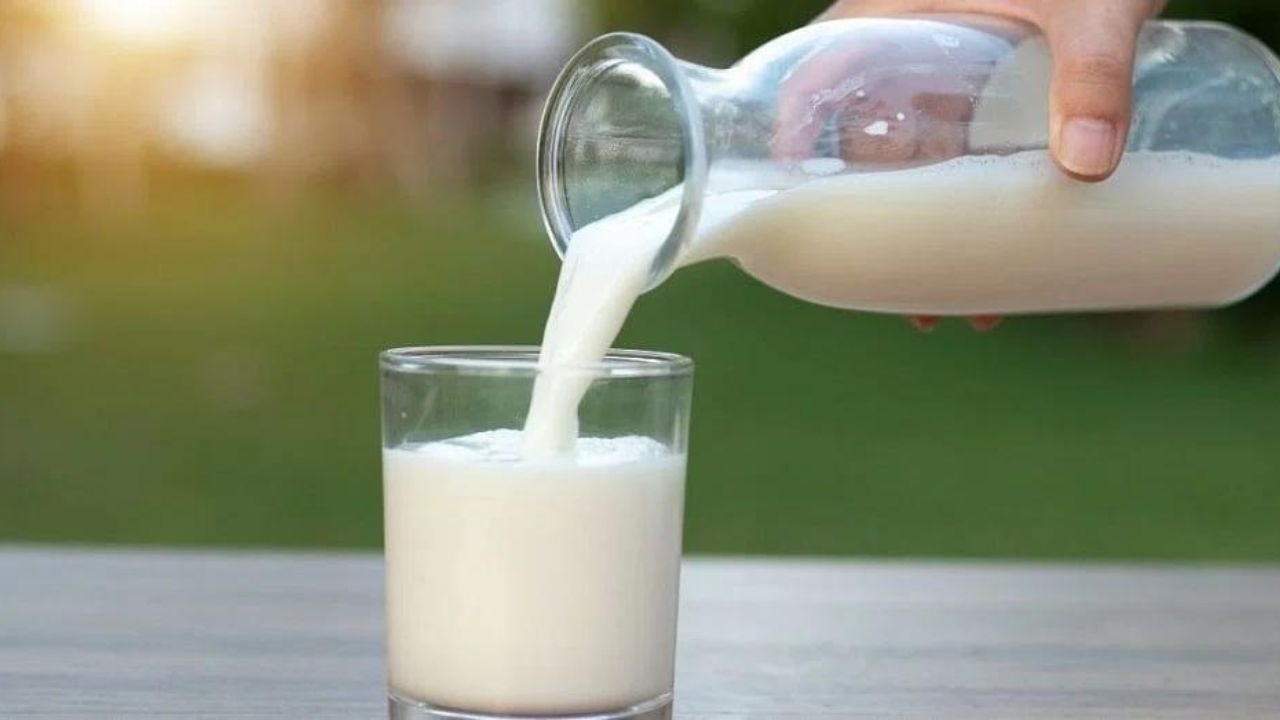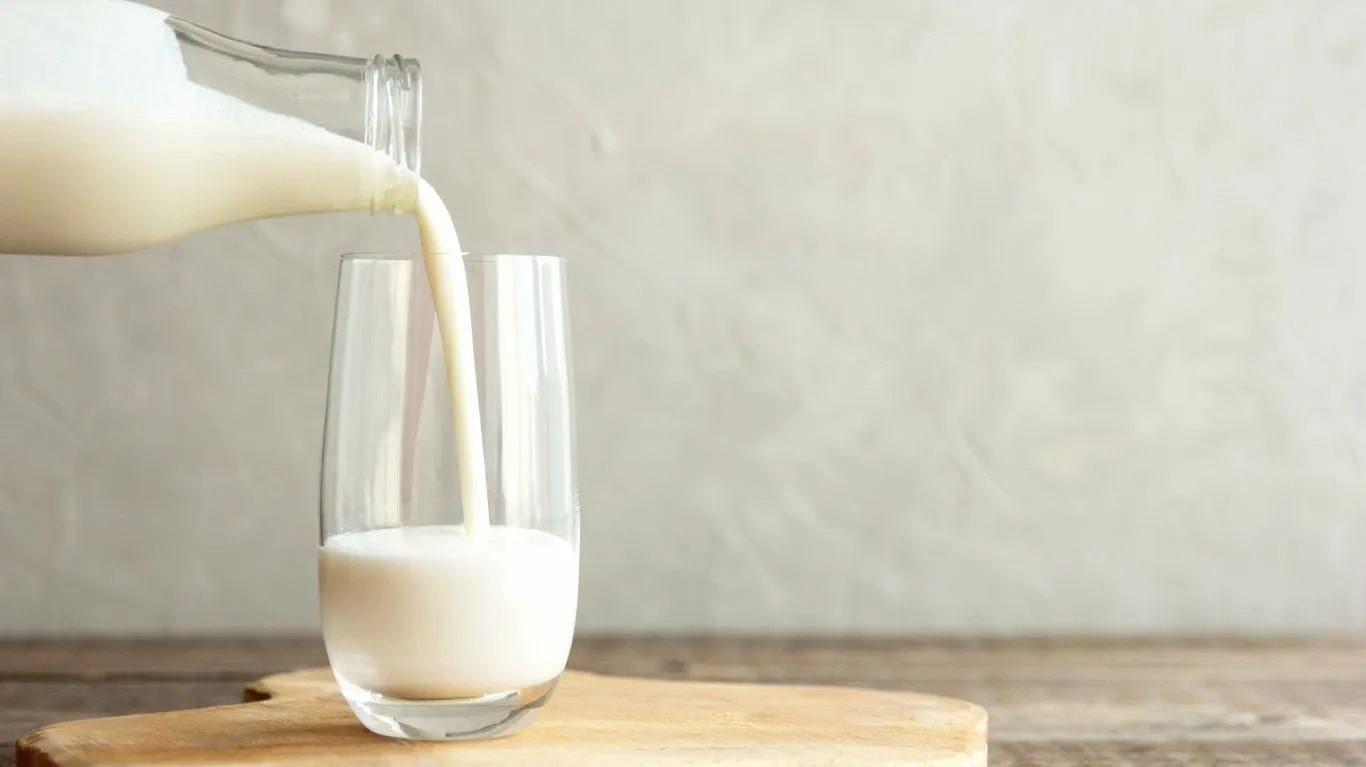Home>Furniture & Design>Interior Design Trends>How Many Calories Does A Glass Of Milk Have


Interior Design Trends
How Many Calories Does A Glass Of Milk Have
Published: February 5, 2024
Discover the latest interior design trends and get inspired to transform your space. Stay ahead of the curve with our expert insights and tips.
(Many of the links in this article redirect to a specific reviewed product. Your purchase of these products through affiliate links helps to generate commission for Storables.com, at no extra cost. Learn more)
Introduction
Milk is a staple in many households, cherished for its versatility and nutritional value. Whether enjoyed on its own, added to cereal, or used in cooking and baking, milk is a versatile ingredient that has been a part of human diets for centuries. Understanding the caloric content of milk is essential for individuals seeking to maintain a balanced diet and make informed dietary choices.
In this article, we will delve into the caloric content of milk, exploring the nutritional aspects of this beloved beverage. From whole milk to skim milk, we will examine the varying caloric values and shed light on the factors that influence these differences. By the end of this exploration, you will have a comprehensive understanding of the caloric implications of incorporating milk into your daily diet.
Let's embark on this journey to uncover the caloric mysteries of milk, empowering ourselves with knowledge that can contribute to our overall well-being.
Key Takeaways:
- Milk’s caloric content varies by type and fat content, with whole milk having the highest calories and skim milk the lowest. Understanding these differences helps make informed dietary choices for a balanced diet.
- Factors like fat content, processing methods, and serving size influence milk’s caloric content. Knowing these factors empowers individuals to choose milk varieties that align with their nutritional needs and health goals.
Read more: How Many Calories Is A Glass Of Milk
The Nutritional Content of Milk
Milk is renowned for its rich nutritional profile, making it a valuable component of a balanced diet. It is a significant source of several essential nutrients, including calcium, protein, vitamins, and minerals. These nutrients play pivotal roles in supporting overall health and well-being.
Calcium
One of the most prominent nutritional components of milk is calcium. This mineral is crucial for maintaining strong bones and teeth, making it particularly important for bone health, especially in growing children and aging adults. Additionally, calcium is involved in various physiological processes, such as muscle function and nerve transmission.
Protein
Milk is also a notable source of high-quality protein. Proteins are essential for the growth, repair, and maintenance of body tissues. The presence of protein in milk makes it a valuable dietary option for individuals seeking to meet their protein requirements.
Vitamins
Milk contains essential vitamins, including vitamin D, which plays a vital role in calcium absorption and bone health. Additionally, milk is a source of vitamin A, which is beneficial for vision, immune function, and skin health. The presence of these vitamins further enhances the nutritional value of milk.
Read more: How Many Calories In One Glass Of Milk
Minerals
In addition to calcium, milk provides other essential minerals such as potassium, phosphorus, and magnesium. These minerals contribute to various physiological functions, including muscle function, electrolyte balance, and energy metabolism.
Overall Nutritional Value
The combination of these nutrients makes milk a well-rounded and valuable addition to a healthy diet. Whether consumed on its own or used in various culinary applications, milk offers a diverse array of nutrients that support overall health and well-being.
Understanding the nutritional content of milk provides individuals with valuable insights into the role it can play in their dietary choices. By recognizing the abundance of essential nutrients present in milk, individuals can make informed decisions about incorporating this wholesome beverage into their daily routines.
Calories in Different Types of Milk
The caloric content of milk varies depending on its type and fat content. Understanding the differences in caloric values among different types of milk is essential for individuals seeking to manage their calorie intake and make informed dietary choices.
Whole Milk
Whole milk, also known as full-fat milk, is characterized by its creamy texture and rich flavor. It contains a higher fat content compared to other varieties of milk, contributing to its distinctive taste. In terms of caloric content, one cup of whole milk (approximately 244 grams) typically provides around 150 calories. The higher fat content in whole milk contributes to its relatively higher caloric value compared to other milk options.
Read more: How Many Calories Is A Glass Of Whiskey
2% Reduced-Fat Milk
2% reduced-fat milk, as the name suggests, contains approximately 2% milk fat. This reduction in fat content results in a lower caloric value compared to whole milk. A one-cup serving of 2% reduced-fat milk (approximately 244 grams) generally provides around 120 calories, making it a moderately lower-calorie alternative to whole milk.
1% Low-Fat Milk
1% low-fat milk is another reduced-fat option that offers a further reduction in fat content compared to 2% milk. As a result, the caloric content of 1% low-fat milk is lower than that of its higher-fat counterparts. A one-cup serving of 1% low-fat milk (approximately 244 grams) typically contains around 100 calories, making it a lighter option for individuals seeking to manage their calorie intake.
Skim Milk
Skim milk, also known as fat-free milk, is characterized by its minimal fat content. As a result, it boasts the lowest caloric value among the different types of milk. A one-cup serving of skim milk (approximately 245 grams) generally provides around 80 calories, making it an ideal choice for individuals aiming to minimize their calorie consumption while still benefiting from the nutritional value of milk.
Understanding the varying caloric values of different types of milk empowers individuals to make informed decisions based on their dietary preferences and health goals. Whether seeking a richer flavor profile or aiming to manage calorie intake, the diverse range of milk options allows individuals to tailor their choices according to their nutritional needs and preferences.
Factors Affecting the Caloric Content of Milk
The caloric content of milk is influenced by several factors, each contributing to the overall nutritional profile of this dairy staple. Understanding these factors provides valuable insights into the composition of milk and its implications for dietary choices.
Read more: How Many Calories Is A Glass Of Riesling?
Fat Content
One of the primary factors affecting the caloric content of milk is its fat content. Whole milk, with its higher fat content, contains more calories per serving compared to reduced-fat and fat-free varieties. The presence of fat contributes to the creamy texture and rich flavor of whole milk, but it also elevates its caloric value. In contrast, reduced-fat and fat-free milk options offer lower caloric values due to their decreased fat content, making them suitable choices for individuals seeking to manage their calorie intake.
Processing Methods
The processing methods employed in milk production can also impact its caloric content. For instance, the process of skimming fat from milk to produce reduced-fat and fat-free varieties directly influences their caloric values. Additionally, factors such as fortification with vitamins and minerals may slightly alter the overall caloric content of milk, albeit to a minimal extent.
Added Ingredients
In some cases, flavored or sweetened milk products may contain added ingredients such as sugar, flavorings, or thickeners. These added components can contribute to an increase in the overall caloric content of the milk product. It is essential for individuals to be mindful of the ingredients present in flavored milk options, as they can significantly impact the caloric implications of consumption.
Serving Size
The serving size of milk directly affects its caloric contribution to an individual's diet. Understanding portion sizes and recommended daily intake guidelines is crucial for managing caloric intake. By being mindful of serving sizes, individuals can make informed decisions about incorporating milk into their dietary routines while maintaining awareness of its caloric impact.
Read more: How Many Calories Is A Glass Of Prosecco
Overall Composition
The overall composition of milk, including its protein, carbohydrate, and micronutrient content, contributes to its caloric value. While the focus is often on fat content in relation to calories, the presence of other nutrients also plays a role in shaping the nutritional profile of milk and its caloric implications.
By considering these factors, individuals can gain a comprehensive understanding of the caloric content of milk and make informed dietary choices aligned with their nutritional needs and health goals. Whether seeking a rich and creamy option or a lighter alternative, the diverse factors influencing the caloric content of milk provide individuals with the flexibility to tailor their choices according to their preferences and dietary requirements.
Conclusion
In conclusion, the caloric content of milk varies across different types and is influenced by factors such as fat content, processing methods, added ingredients, and serving size. Whole milk, with its higher fat content, contains more calories per serving compared to reduced-fat and fat-free varieties. Understanding the caloric implications of these variations empowers individuals to make informed dietary choices aligned with their nutritional needs and health goals.
The nutritional value of milk extends beyond its caloric content, encompassing essential nutrients such as calcium, protein, vitamins, and minerals. These nutrients play pivotal roles in supporting overall health and well-being, making milk a valuable component of a balanced diet. Whether consumed on its own or used in various culinary applications, milk offers a diverse array of nutrients that contribute to overall well-being.
By recognizing the abundance of essential nutrients present in milk, individuals can make informed decisions about incorporating this wholesome beverage into their daily routines. Whether seeking a richer flavor profile or aiming to manage calorie intake, the diverse range of milk options allows individuals to tailor their choices according to their nutritional needs and preferences.
Understanding the factors that influence the caloric content of milk provides valuable insights into the composition of this dairy staple. By considering factors such as fat content, processing methods, added ingredients, and serving size, individuals can make informed dietary choices aligned with their nutritional needs and health goals. This knowledge empowers individuals to navigate the diverse landscape of milk options, enabling them to select the most suitable varieties based on their preferences and dietary requirements.
In essence, the caloric content of milk is an integral aspect of its overall nutritional profile. By embracing this understanding, individuals can embrace the versatility and nutritional benefits of milk while managing their calorie intake effectively. Whether savoring the creamy richness of whole milk or opting for the lighter, lower-calorie alternatives, the diverse array of milk options caters to a wide range of dietary preferences and nutritional needs.
Frequently Asked Questions about How Many Calories Does A Glass Of Milk Have
Was this page helpful?
At Storables.com, we guarantee accurate and reliable information. Our content, validated by Expert Board Contributors, is crafted following stringent Editorial Policies. We're committed to providing you with well-researched, expert-backed insights for all your informational needs.












0 thoughts on “How Many Calories Does A Glass Of Milk Have”